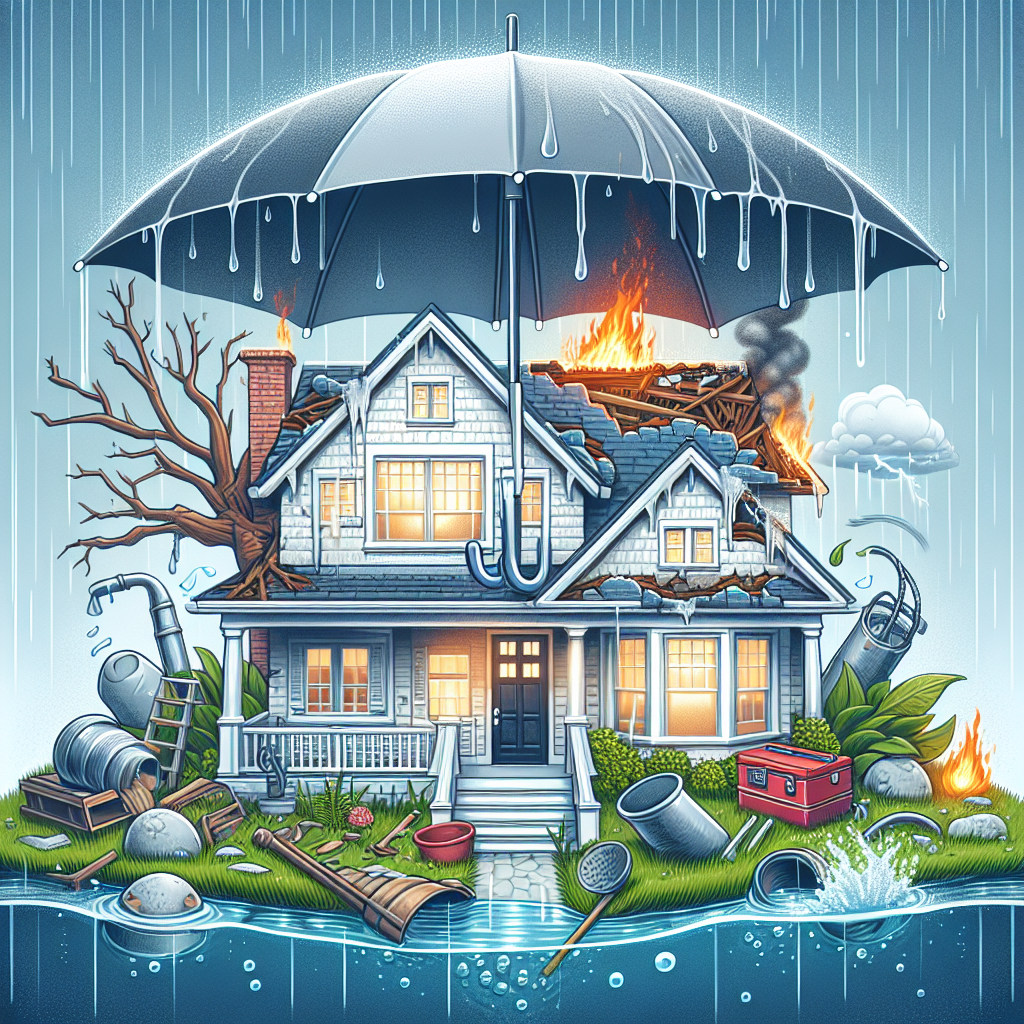Filed under Home Insurance on
What Coverage Do I Need for Home Insurance Guide

A quick, confident answer for busy homeowners
If you’re asking yourself “what coverage do I need for home insurance,” start with these baselines most financial planners and insurance pros recommend:
- Dwelling (Coverage A): Insure to full replacement cost, not market value.
- Other Structures (B): 10% of dwelling, adjust if you have extensive fencing, sheds, or a detached ADU.
- Personal Property (C): 50%–70% of dwelling, replacement cost on contents, plus scheduled coverage for jewelry, art, and collectibles.
- Loss of Use (D): 20%–30% of dwelling (higher if local rentals are costly).
- Personal Liability (E): At least $300,000–$500,000; consider a $1M–$2M umbrella policy if you have assets, a pool, trampoline, dog, or short-term rental exposure.
- Medical Payments (F): $5,000–$10,000 to cover minor injuries without liability claims.
- Key Endorsements: Water/sewer backup, ordinance or law, extended replacement cost, service line, equipment breakdown, and inflation guard.
- Separate Policies You May Need: Flood (FEMA or private), earthquake (especially in high-seismic zones), and windstorm coverage in certain coastal areas.
That’s the short version. For a thorough walk-through—and to truly settle the question “what coverage do I need for home insurance”—keep reading.
Why home insurance coverage matters more now
Construction costs and climate risk have changed the ground rules. Since 2020, materials and labor have climbed significantly, and many regions are seeing higher catastrophe losses. The Insurance Information Institute and industry cost indexes report notable increases in replacement costs driven by labor shortages, supply chain disruptions, and more frequent severe weather. Underinsuring your home—even by 10%–20%—could leave you paying tens of thousands out of pocket after a major loss.
Carriers are also tightening underwriting: older roofs, outdated plumbing or wiring, and high-risk ZIP codes face stricter terms and higher deductibles. That’s why it’s vital to answer “what coverage do I need for home insurance” using today’s rebuilding costs and risk factors—not last year’s assumptions.
Start with your dwelling limit
Everything else in your policy radiates from this number. It should reflect the full cost to rebuild your house with like kind and quality if it were destroyed.
Replacement cost vs. market value
Market value includes land; insurance does not. Replacement cost is what a contractor would charge to rebuild the structure, including materials, labor, architectural details, debris removal, and code updates (the latter often requires an endorsement called ordinance or law). In hot real estate markets, market value can be higher than replacement cost; in others, it can be lower. Insure for rebuild cost—period.
How to estimate accurately
- Use your insurer’s replacement cost estimator and verify the details: square footage, story count, roof type, exterior finish, flooring, custom features, and special elements (covered porches, finished basement, built-ins).
- Cross-check with local builders or online cost tools; many regions rebuild between $175 and $350 per square foot, but custom homes and high-cost metros can run higher.
- Add extended replacement cost (often +25% to +50% limits) or guaranteed replacement cost where available for price spikes after catastrophes.
- Review annually. Material costs, building codes, and inflation shift; an inflation guard endorsement helps but isn’t a substitute for a yearly check-in.
Understand the core coverages
Dwelling (Coverage A)
This covers the structure, built-in appliances, and attached features like a garage. Ask your agent about:
- Extended or guaranteed replacement cost
- Matching of undamaged materials (important for siding/roof claims)
- Roof coverage specifics (actual cash value vs. replacement cost, cosmetic damage exclusions)
Other structures (Coverage B)
Typically 10% of Coverage A. Think detached garages, sheds, fences, gazebos, pool decks, and mailboxes. If you have a large fence line, a detached ADU, or extensive hardscaping, ask to increase this limit.
Personal property (Coverage C)
This protects your belongings whether they’re at home, in your car, or temporarily offsite.
- Valuation: Choose replacement cost value (RCV) over actual cash value (ACV) to avoid depreciation deductions.
- Sublimits: Standard policies cap certain items—jewelry, watches, firearms, silverware, collectibles, cash, and business property. Schedule valuable items for broader protection and higher limits.
- Special categories: Musical instruments, camera gear, fine art, wine collections, and sports memorabilia often need their own endorsements or scheduled policies.
Loss of use (Coverage D)
If a covered loss makes your home uninhabitable, this covers additional living expenses—hotel or rental, meals, laundry, pet boarding, extra commuting. In high-rent areas, set this at least 20%–30% of dwelling coverage—or choose an option with a time limit (12–24 months) rather than a fixed dollar cap if available.
Personal liability (Coverage E)
Covers bodily injury or property damage to others when you’re legally responsible. Common claims include slip-and-falls, dog bites, and injuries involving trampolines or pools. Consider at least $300,000–$500,000. If you have significant assets or exposure (short-term rentals, backyard parties, teen drivers, watercraft), add a $1–$2 million umbrella policy for extra protection and broader coverage territory.
Medical payments to others (Coverage F)
No-fault coverage for minor injuries on your premises—often $5,000–$10,000. It can defuse disputes before they become liability claims.
Essential endorsements and smart add-ons
- Water/sewer backup: Covers water damage from backed-up drains or failed sump pumps. Standard policies often exclude this.
- Ordinance or law: Pays for code-required upgrades during repair. Building codes change regularly; this avoids a surprise bill.
- Extended or guaranteed replacement cost: Buffers against sudden cost spikes after a disaster.
- Service line: Covers underground pipes and wiring (water, sewer, electric) from the street to your home—usually excluded.
- Equipment breakdown: Protects HVAC systems, built-in appliances, and smart-home tech from mechanical or electrical failure.
- Inflation guard: Automatically raises limits as costs rise—still review annually.
- Mold/fungi: Many policies limit or exclude mold; consider higher sublimits if you live in humid climates or have a history of leaks.
- Matching siding/roof endorsement: Ensures aesthetic consistency after partial damage.
- Identity theft/cyber: Modest cost for added peace of mind, especially for remote workers with home networks.
What standard home insurance doesn’t cover
To fully answer “what coverage do I need for home insurance,” you must address exclusions. The big three:
- Flood: Rising water from outside the home isn’t covered. Buy a separate flood policy through the National Flood Insurance Program or private carriers. Even homes outside mapped high-risk zones file a significant share of claims.
- Earthquake: Typically excluded unless you add a stand-alone policy or endorsement. Consider if you live near fault lines or in areas with liquefaction risk.
- Maintenance and wear and tear: Insurance covers sudden and accidental losses, not gradual problems like rot, vermin, or neglect.
In coastal states, windstorm or named-storm deductibles may apply separately, expressed as a percentage of the dwelling limit. Hail deductibles are common in the Midwest and Plains. Ask how these interact with your base deductible.
Coverage levels by homeowner profile
First-time buyer of a single-family home
- Dwelling: Full replacement cost with at least +25% extended replacement.
- Personal property: 60%–70% of dwelling, RCV on contents, schedule engagement rings or expensive electronics.
- Loss of use: 20%–30% of dwelling.
- Liability: $300,000–$500,000; add a $1M umbrella if you host often or have a dog/pool.
- Add-ons: Water backup, service line, equipment breakdown, ordinance or law, inflation guard.
High-value or custom home
- Dwelling: Guaranteed replacement cost where possible, or +50% extended replacement.
- Personal property: High limit with RCV; schedule fine art and collections under agreed value policies.
- Loss of use: Higher cap or time-based coverage to match local rents.
- Liability: $500,000 minimum plus a $2M–$5M umbrella.
- Risk-specific: Wildfire defensible-space credits, private flood, earthquake with reasonable sublimits for contents and loss of use.
Condo owner (HO-6)
- Building property: Enough to cover interior finishes (walls-in), upgrades, and the master policy deductible (loss assessment coverage).
- Personal property: RCV with attention to sublimits.
- Loss of use and liability: Similar ranges as homeowners.
- Key add-ons: Water backup, loss assessment, building ordinance or law, equipment breakdown for in-unit systems.
Landlord or short-term rental
- Use a dwelling policy (often DP-3) or a carrier-approved home-sharing endorsement—not a standard homeowners policy.
- Higher liability limits; consider an umbrella.
- Loss of rents coverage to replace rental income after a covered loss.
Renter (HO-4)
- Personal property: RCV and adequate limits for electronics, bikes, and jewelry.
- Liability: $300,000 recommended.
- Loss of use: Enough to cover alternative housing locally.
How much liability is enough?
Liability protects your current assets and future wages. If you own a home, have savings, or a side business, $500,000 is a prudent minimum. Add an umbrella liability policy ($1–$2 million) for a relatively low premium. If you’re wondering “what coverage do I need for home insurance” from a liability standpoint, consider your risk profile: pools, dogs of certain breeds, frequent entertaining, teen drivers, and rental activity all argue for more protection.
Deductibles and premium strategy
Your deductible meaningfully shapes your premium and claim behavior.
- Choose the highest deductible you can comfortably pay out of pocket (commonly $1,000–$2,500). This lowers premiums and discourages small claims that can raise rates.
- Understand separate deductibles for wind/hail or hurricanes. A 2% named-storm deductible on a $500,000 dwelling equals $10,000 out of pocket per claim.
- Consider a disappearing deductible or claim-free discounts if offered, but compare total five-year costs.
Industry trends that affect your policy
- Inflation and rebuilding costs: Material and labor indices have risen substantially since 2020. Underinsuring is more likely today than five years ago.
- Catastrophe frequency: More billion-dollar weather events mean tighter underwriting and more granular pricing by ZIP code or even neighborhood.
- Mitigation incentives: Insurers increasingly offer credits for fortified roofs, water-shutoff devices, wildfire hardening, and impact-resistant windows.
- Claim settlement terms: More carriers use roof-surface cosmetic-damage exclusions and ACV on older roofs; negotiate for RCV when possible.
These dynamics make the question “what coverage do I need for home insurance” less static and more of an annual planning exercise.
Claims-proofing your policy (and your home)
- Document everything: Keep a digital home inventory with photos, serial numbers, and receipts. Store a copy in the cloud.
- Know your roof: Age, material, and condition influence both coverage and price. Proactive replacement can unlock better terms.
- Install mitigation tech: Smart water-leak sensors and an automatic shutoff valve can earn discounts and avoid major losses.
- Fire and weather hardening: Class A fire-rated roofs, defensible space in wildfire zones, and impact-resistant windows in hail/hurricane regions cut risk and sometimes premiums.
- Maintain systems: Update polybutylene or galvanized plumbing, knob-and-tube wiring, and old electrical panels; carriers increasingly refuse or surcharge outdated systems.
Step-by-step: build the right policy
- Calculate replacement cost: Validate square footage and finishes; add extended or guaranteed replacement.
- Set other structures: List everything detached; raise limits if needed.
- Value your belongings: Start at 60%–70% of dwelling for personal property; choose replacement cost, then schedule valuables.
- Plan for temporary housing: Price local rentals to set loss-of-use limits.
- Dial in liability: Choose $300,000–$500,000 plus an umbrella based on assets and risk exposures.
- Add critical endorsements: Water backup, ordinance or law, service line, equipment breakdown, inflation guard.
- Address excluded perils: Quote flood and earthquake if relevant; confirm wind/hail deductibles.
- Optimize deductibles and discounts: Bundle auto, install safety devices, and consider a higher deductible you can afford.
- Review annually: Update limits for renovations, purchases, new risks (home business, rentals), and cost inflation.
Common pitfalls and how to avoid them
- Insuring for market price: Base dwelling coverage on rebuild cost, not what you paid for the home.
- Forgetting code upgrades: Without ordinance or law, you may pay out of pocket to meet new building codes.
- Ignoring sublimits: Jewelry and collectibles need scheduled coverage to avoid low caps.
- Overlooking water backup: One of the most frequent claims—and often excluded unless endorsed.
- Low loss-of-use limits: Rents can soar after disasters; choose a robust limit or a time-based option.
- Not reading roof terms: ACV settlements on older roofs can slash claim payouts.
- Letting limits stagnate: Rising construction costs demand annual updates.
Real-world examples to guide limits
- Suburban 2,200 sq. ft. home with mid-grade finishes: If local rebuild costs are $225/sq. ft., target dwelling coverage near $495,000; add +25% extended replacement (to about $618,750).
- Detached garage and fence: Standard 10% other structures may be fine, but a large privacy fence plus a shed could require increasing to 15%.
- Belongings: Start at 60% of dwelling ($297,000 in the example), RCV on contents; schedule $18,000 engagement ring and $7,500 camera kit.
- Loss of use: In a tight rental market, set 24 months or 30% of dwelling to reflect potential displacement time.
- Liability: $500,000 base plus a $1M umbrella if you have a pool and host frequent gatherings.
Answers to top questions
Is an HO-3 or HO-5 policy better?
HO-5 policies typically offer broader “open perils” for both dwelling and contents, fewer exclusions, and higher default sublimits. They cost more but reduce gray areas at claim time. If you’re asking “what coverage do I need for home insurance” with an eye to fewer surprises, HO-5 is often worth the premium, especially for higher-value homes.
How often should I adjust my limits?
Annually, or after major life events: renovations, big purchases, a new roof, adding a dog or pool, starting a home business, or converting space to short-term rentals.
What about bundling?
Bundling home and auto can trim 10%–25% off premiums. Compare total cost and coverage quality, not just the discount size.
Do I really need flood insurance outside high-risk zones?
Yes, it’s worth a quote. A meaningful share of flood claims occur outside FEMA’s high-risk areas, and premiums can be modest for lower-risk properties.
How do claim-free discounts and small claims interact?
Frequent small claims can erase discounts and raise premiums. A higher deductible and a “self-insure the small stuff” mindset can reduce long-run costs.
A simple checklist you can copy
- Confirm dwelling replacement cost, then add extended or guaranteed replacement.
- Increase other structures if you have big fences, sheds, or a detached studio.
- Set personal property at 60%–70% of dwelling with replacement cost on contents.
- Schedule high-value items and review sublimits for jewelry, art, and electronics.
- Ensure loss-of-use covers realistic rent and living expenses in your area.
- Raise liability to at least $300,000–$500,000 and consider an umbrella.
- Add water backup, service line, equipment breakdown, and ordinance or law.
- Quote flood and earthquake if geography warrants; verify wind/hail deductibles.
- Install mitigation devices and ask about discounts.
- Reassess annually; update after renovations or major purchases.
Bringing it all together
The smartest way to approach “what coverage do I need for home insurance” is to treat your policy like a living document: verify your home’s rebuild cost, right-size your contents and loss-of-use limits, and reinforce weak spots with the right endorsements. As the market evolves—cost inflation, stricter underwriting, changing weather patterns—keep your coverage in step.
If you remember just one thing, make it this: insure your home to its true rebuild cost, then layer in extended replacement, water backup, and robust liability. With that foundation, the rest of your decisions become easier—and your financial safety net much stronger. When friends or neighbors ask “what coverage do I need for home insurance,” you’ll have a confident, well-reasoned answer grounded in today’s realities.
Use this guide as a reference before your next renewal, and schedule a 30-minute annual review with your agent. A focused conversation—anchored to your home’s current rebuild cost and your family’s evolving risk profile—can save you money, avoid claim-time surprises, and deliver the peace of mind you’re paying for. That’s the real value behind the question “what coverage do I need for home insurance,” and it’s well within reach.





